
Flying with your bicycle can be a real gut-wrencher. Aside from the handling surcharge that can sometimes rival your airfare, there’s also the risk that your baby will get lost or mangled in transit. Every time you fly, it’s a roll of the dice. The airline employee who checks your luggage and the baggage handlers at either end are the variables. You can stack the odds in your favor, however, by doing a little research and packing your bike with care.
Read Up!
Read and compare each airline’s baggage policy before you book your flight. The fine print will likely help you decide which company to fly with.
Most major airlines have a surcharge fee for flying with a bicycle, but those can range anywhere from $50 to $200 in each direction, so you’ll want to choose your carrier wisely. If a boxed bike is the approximate size of another non-bike piece of luggage, many airlines will charge more simply for the knowledge that it’s a bicycle. It’s a bit of normal-pricing/wedding-pricing syndrome unfortunately. Many people who fly frequently with their bikes prefer to claim the luggage is something else (trade show booth, work materials) in order to avoid paying the inflated fee, but in doing so you’ll forfeit any possible liability claims if the bike is damaged.
Box, Bag, or Case?
Deciding whether or not to pack your bike in a cardboard box, bike bag, or rigid bike case is basically a matter of weighing your required protection against how much you’re willing to spend. A cardboard box is definitely the cheapest option (free), and has the added benefit of being able to be recycled upon arrival so you don’t have to deal with it anymore. Unfortunately, it also does leave your bike more vulnerable to mishandling by baggage carriers.
Rigid bike cases are definitely the most secure option, but also the most expensive, and present you with the problem of figuring out what to do with them once you get to where you’re going. Chances are you won’t be touring with that thing.
Bike cases strike a nice balance between the two, offering more protection than a box but for cheaper (and much lighter) than a case.
How to Find a Box
You should be able to get a free box from your local bike shop. Have one set aside about a week before your flight; boxes are usually broken down and stuffed into the recycling bin as soon as they’re emptied. Ask for a pair of plastic braces that snap into your dropouts (every new bike is shipped with them). These will keep your fork legs from puncturing the cardboard and prevent your frame from being bent due to side impact or stacking.
Ask for some plastic inserts that snap into your hubs. They’ll protect your wheels and keep your axles from punching through the box. If your bike shop doesn’t have inserts available, there’s a company called bopworx which makes rubber guards for all sensitive parts of the bike, specifically to protect your ride when in transit.
If you decide to go with two small boxes, grab one designed for shipping wheelsets – a perfect fit for your hoops. The box should also include some anti-crushing cardboard sections.
DIY?
Many shops will box your bike for a fee. This is a good option only if you aren’t comfortable doing it yourself and if you’re sure someone can assemble your bike for you at the other end.
How To
* Your ride will fit into a standard bike box with pedals removed, handlebars turned or removed and one or both wheels removed. If you remove both wheels, place your frame in the box upside down. Never rest the frame on the derailleur hanger.
* An old myth suggested you need to deflate your tires to about half the max PSI written on their sidewalls so they don’t explode at altitude. Since your bike will be traveling in the same pressurized cabin as dogs and cats, this isn’t actually true, but to err on the side of caution you may want to deflate them a bit.
* Turn or remove the handlebars. To turn, loosen the stem bolts that clamp onto the fork steerer. To take the stem off, remove the headset adjustment bolt, loosen the stem bolts and work the stem off the fork. Have someone show you how to adjust your headset upon reassembly if you aren’t sure how to do it yourself.
* Remove pedals, remembering that the non-drive side pedal is reverse-threaded (clockwise to loosen). Using an Allen key, remove your rear derailleur from the hanger, first making sure there’s no tension on the chain; this will keep the hanger from getting bent or snapped. Zip-tie or tape the derailleur to the inside of the chainstay.
* Remove quick release skewers from the hubs to save space and prevent damage; tape or zip-tie them to your spokes. Snap the plastic inserts into your hubs.
* Snap the plastic braces into your fork (and frame) dropouts.
* Keep all parts separate and organized. Make sure there are no loose bolts rolling around in the bottom of the box.
* Wedge sleeping pads, clothes, shoeboxes or cardboard inserts (shipped with new bikes) between the frame, parts and box to prevent crushing due to impact or stacking. Your boxed bike should be able to withstand a karate kick or a kung-fu punch from any direction. Alternatively, the aforementioned Bopworx will play the same role as a variety of household items.
Getting There
Unless you plan to bag your bike, take a taxi to the airport. Specify that you have a boxed bike and ask for a van.
What to Expect at the Airport
To avoid problems, print the airline’s baggage policy and keep it handy when you check your bike. Make sure you’ve measured and weighed your boxes so that they meet the airline’s requirements. Be nice!
Preventing Damage and the Unthinkable “What If?”
Some airlines require that you sign a limited release form that prevents you from claiming damages incurred during handling. If you refuse to sign, your bike simply won’t be accepted. Again, read before you book.
Take photos of your bike going into the box. Pack with care to prevent crushing. “This Side Up” and “FRAGILE” stickers can’t hurt.
Putting the Pieces Together
If you’ve boxed your bike yourself, putting it together again shouldn’t be a problem, assuming you’ve remembered your tools. All you should need is your set of Allen keys and a pump.
* Carefully thread in the rear derailleur with an Allen key, making sure it’s snug. Reinsert the quick-releases, put on your wheels and reconnect the brakes. Turn stem, make sure headset is properly adjusted and tighten stem bolts. Insert seat post (of course you remembered to mark the height with some electrical tape!) and thread in pedals (clockwise for the drive side, counterclockwise for the non-drive side).
* Inflate tires, hop on and ride!
This article was originally published in 2010 and has been updated.
Get your FREE copy of our new guide: Momentum Mag's E-Bike Guide
In this guide we explore some of the different ways an e-bike can provide solutions for different users, outline the different types of e-bikes available, give a briefer on the technological components, and offer some advice on purchasing your own electric bicycle.
Thank you for your submission. Please check your inbox to download the guide!

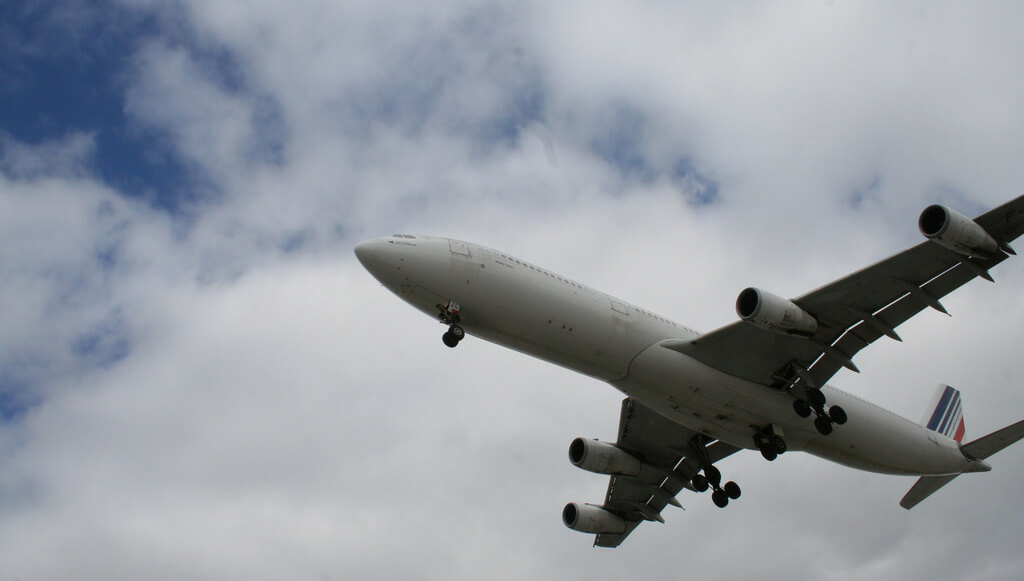

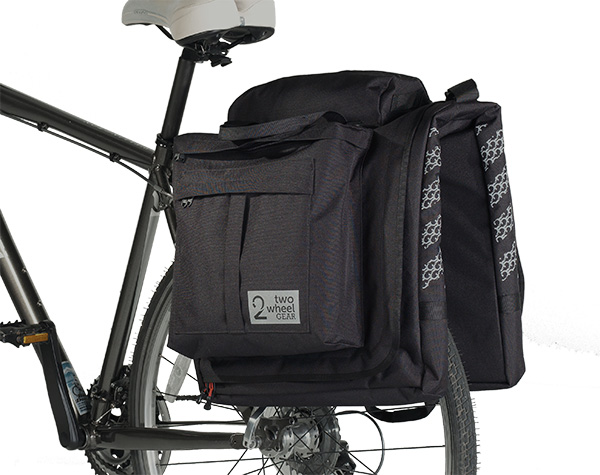

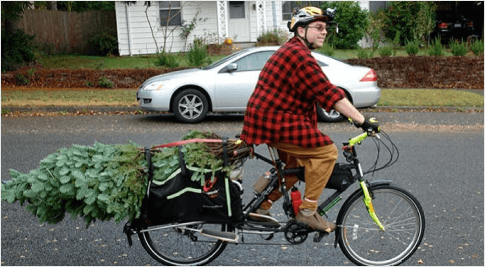

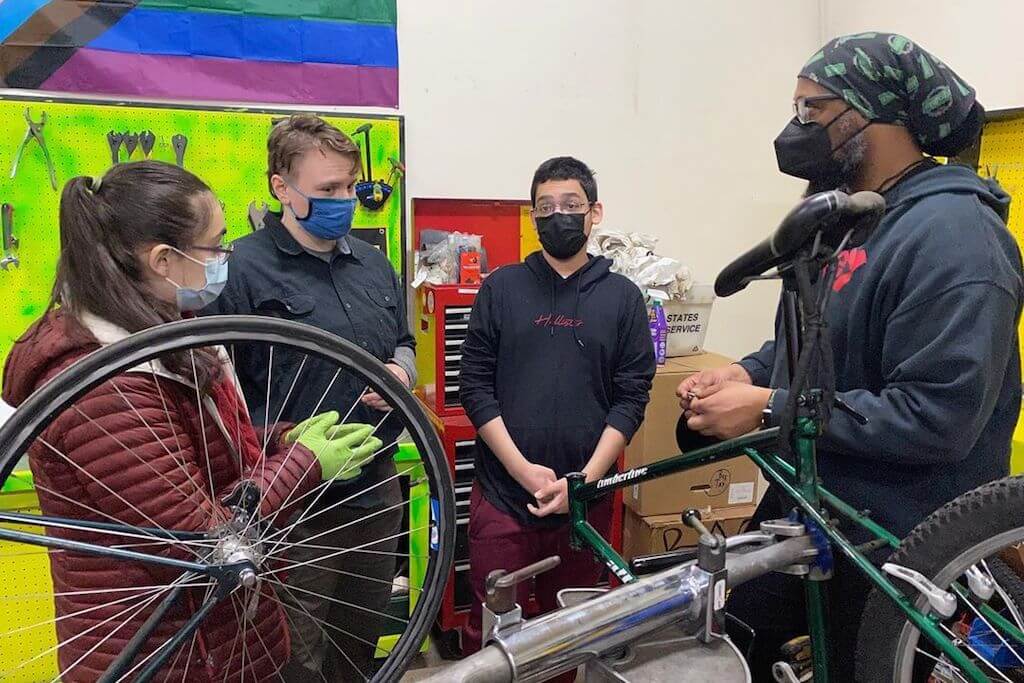
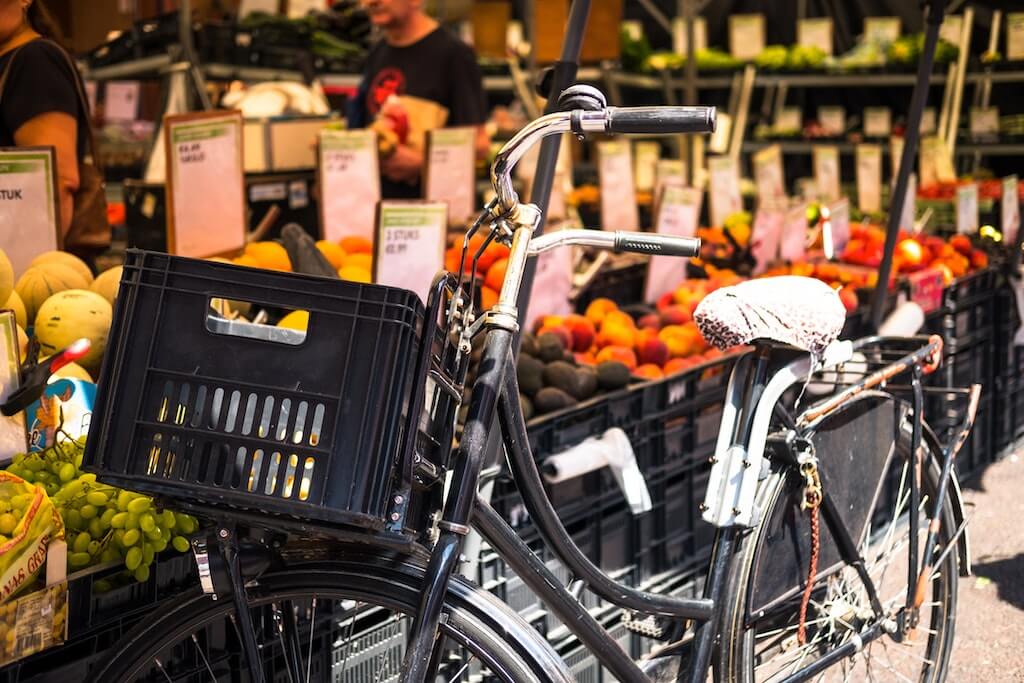

Hi,
Great article and comments.
Was wondering is anyone aware as to whether any US airlines sell bicycle boxes at the airport? In particular Denver airport?
Alternatively, does anyone know the dimensions of the Amtrak bicycle box. I will be flying Qantas and so the box would need to less than 140 cm (55 in) x 30 cm (12 in) x 80 cm (32 in).
Many Thanks
Dave
Keep in mind the TSA inspection if you fly out of the USA. They ripped open my cardboard box then applied a few cosmetic pieces of tape before tossing it on a plane. On my way home, the rain soaked my cardboard box sitting outside on the luggage cart waiting to load the plane. This prompted me to buy a carrier bag, with the added benefit of wheels. The bag came with a “TSA Approved” lock which was broken and discarded on its maiden voyage, but the bag itself and the bike survived a round-the-world voyage.
I’ve taken bikes by air from the UK to the USA, various EU countries and South Africa. A cardboard bike box from a bike shop is the best option unless you intend to fly very frequently. First, there is the environmental benefit – you reuse a box and don’t need anything new to be created. The difficulty may be in storing the box for the return trip, but at worst, it gets recycled (or used again, in some areas it could be building material). You’d have a bigger problem with a bespoke bicycle container – you would *have* to find storage.
So let’s look at the options. You are flying somewhere for a cycling holiday and want to take your own bike. (I do this now, after a “bespoke road cycling” holiday company provided me with a 7-speed hub-geared city bike in the Pyrenees one year. I guess XL frames were too difficult for them.)
In this case, you have to store the box/carrier regardless. Good thing is, no one is likely to steal a cardboard box from a hotel storeroom.
Note that – AFAIK – no US airport offers a Left Luggage facility. Not sure if EU airports will take a bike carrier, but no doubt it’s just a matter of money.
Another possibility is that you are flying to Point A, cycling to Point B and then flying home. A box wins again. Recycle it upon arrival and find a replacement for the trip home at Point B. Worst-case scenario – you have to cobble a box together out of smaller boxes and tape. You can do it!
Or maybe you are moving a bike from home to a holiday home? Box is the clear winner. You’d have to bring the empty case back (or leave it with the bike).
So, unless you are a pro or a very, very frequent air traveller with a bicycle who stays in posh hotels that will store your huge empty bike carrier for you – or perhaps take multiple versions of those “pretend you’re a pro” EU cycle torture tests, a cardboard box wins hands-down. But then, for a lot of cyclists, it’s really all about style (“The Rules”) so an expensive plastic box made of petrochemicals is de rigueur. I do hope there is a Rapha version. Seriously, though – for these “stag-tours” style is important and it will be five or six mates flying together to a tour operator who will have a van, so the protective cases look cool and also allow easy loading in the van. I have one nicely gouged downtube from a tour operator’s transport webbing clamp – thanks for that.
Some details – cardboard boxes slide amazingly well on airport floors (or even dirt). Just make a drag handle out of multiple loops of tape. Most boxes have lifting cutouts for hands (I use tape to reinforce these so they don’t tear). You can often find a box that will fit inside a slightly larger box for extra security. Watch the weight, though. You might just cut some extra side panels to slip in.
Light bikes can take a lot of kit (helmet, shoes, clothing) inside the box and still be within weight guidelines. Put anything small in a sturdy plastic bag and tape/ziptie it to something – bits fall out. Pay special attention to the frame ends (dropouts) and the large chainwheel as they are the most likely places for impact damage. A short piece of flat wood (look in skips) under the main chainwheel will protect it and the box from the teeth. Remove the seat post from the frame (it’s a lever). Shift to the smallest rings F & R (there will always be some tension on the chain but this reduces it) and then remove the rear derailleur (RD). Put the RD in a plastic bag (greasy). Take some disposable gloves (or thin work gloves). Note you can buy zip ties with a release, so they are reusable. Turn the fork backwards if it saves a bit of space (some it makes no difference) which may mean the stem needs turning around as well. Zip tie the handlebars inside the frame triangle. Be careful not to kink cables. The plastic fork/dropout spacers are not very strong – you can cut a piece of wood to fit in five minutes. Then use screws with large washers to hold in place. Much stronger. Wrap the chain up as much as possible in a bin liner. You might consider wrapping the bike in plastic – depends on how precious you are and where you are going, but it’s not unknown for luggage to sit out in the rain. (I know – get a bike wet? Horrors!)
Remember at most airports “bulky items” both are loaded separately and returned separately. Don’t wait 30 minutes at the baggage carousel when you bike is waiting back with the dog crates. Write your contact details on the box with a huge black permanent marker. Remember to photograph the bike itself and record the serial number and register them (Bike Register, Immobilise). Don’t forget your lock.
I have one MKS removeable SPD pedal. The other one removed itself somewhere and I never found it. Expensive mistake. For cheap bikes there are cheap fold-up pedals. But really – if removing pedals is too hard you should be renting a bike at your destination. Some pedals (better ones) can be removed with a sturdy Allen key from the rear, but you might need a rock to break the initial tightness – watch the direction! Still lighter than a decent pedal wrench you will probably only need twice.
Damn. I just can’t get my bike to fly no matter how hard I try, and I had hoped this article would help …
For convenience I don’t think you can beat flying with a Brompton folding bike. My wife and I took our new Bromptons to New Orleans recently. We transported them in padded suitcases made by a company named B&W. While not specifically made for Bromptons, they might as well have been as they fit a folded Brompton perfectly. No disassembly / assembly of the bikes required. Just checked them as normal luggage. In all we had four large suitcases (2 for the bikes, 2 for our stuff). No extra baggage charges. I have heard of some folks carrying them on board the plane and stashing them in the overhead but we haven’t tried that yet.
Good article. Among tools for re-assembly I don’t think that you mentioned a pedal wrench. Also, firms (such as MKS) offer several pedals which have a locking piece that goes in the crank and allows their special pedals to be solidly attached or removed in seconds. No wrench! In the last fifty years I’ve traveled with my bike as luggage only three times, twice by airline and once by bus. One of the times I made a box by getting some large boxes (like for a refrigerator) from an appliance store and cutting and taping. A bike shop might have some of the special frame protectors that bikes are shipped with which are put in the dropouts where the wheels would go. They would normally throw them away! Front and rear forks seem to be a vulnerable area for damages but are easily protected with these spacers. Happy trails!
Removable pedals – can you specify which model of pedal is easily removable? I couldn’t find that exact specification from the MKS website. Thanks
I’ve had tremendous success with a folding bike and a clear shower curtain and a lot of packing tape and a little padding material. Alaska Air didn’t charge me anything extra to fly with this (I carried on my Jessie Bag –https://store.ricksteves.com/shop/p/classic-backpack — of personal items for free). That said, prepping it to fly in the terminal is still a time-consuming process and one should allow 1 hour or more JUST to fold and pack your bike properly. Don’t forget to let the air out of your tires!
The letting air out of your tires is unnecessary. If your tires were suddenly transported to the ful vacuum of outer space, the pressure difference would only be about 15 psi (1 Bar). Much less at flying altitudes! Having your tires normally inflated, though, helps protect your rims from accidental bangs during transportation. Leave your tires normally inflated for best results!
Amtrak is a great alternative to the airlines for cyclists if you have enough time. Last year I traveled via Amtrak from San Francisco to Denver. I took my bicycle with me. I bought one of Amtrak’s bike boxes for $20.00. It is significantly larger than a conventional bike box. The great news was the $20.00 covered everything – NO handling or extra baggage fee!
It is unfortunate that on Northeast routes Amtrak is very bike-intolerant. This is slowly changing – next month Amtrak will allow bikes on The Vermonter – but as of now Empire Service between NYC and Buffalo, for example, strictly forbids bicycles.
Comments are closed.